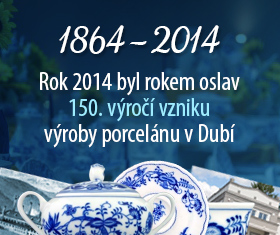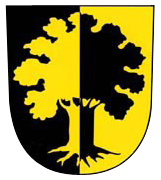“Onion” decoration
This type of decoration is based on depicturing and linking of simplified vegetal motifs on the background of Eastern Asian philosophy, however adjusted to the European style and approach. This was the concept of its inventor in 1729 Johan David Kretschmar who was one of the group of designers in the first European porcelain factory in Meissen.
And why blue onion pattern? Its name, known all over the world, arose entirely by chance, from misunderstanding that pomegranate decorating namely plates edges was recognized by someone, in particular also by colleagues of Johan Kretschmar, with irony as melon and mostly as onion. In this way, onion was the basis of “onion pattern” although the decoration in its whole graphic design does not depicture onion at all and this type of vegetable is not needed for production of “onion porcelain”.
Despite of that, the term “onion porcelain” is a symbol and notion of delicate beauty, linking usability with delight for the heart and representative of singularity and worldwide fame. There is no other decoration and shape which would be so much preferred for almost 300 years.
Porcelain with “onion pattern” has been produced and delivered by the company since 1885 first under the name MEISSEN and since 1956 under the trademark ZWIEBELMUSTER. The company has therefore been, for decades or even centuries, among 4 manufactures in the world which maintain the so called under-glaze technology.
 The right side of the central motif
The right side of the central motif
The branch of a chrysanthemum growing from a root with a large open flower at its tip and under the open flower the small closed bud of this plant remind some historians of the flower of a lotus or aster from the original Asian patterns and symbolizing time.
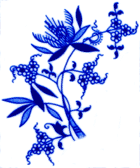 The left side of central motif
The left side of central motif
A thick bamboo branch grows from the root and is entwined by a flowering climbing plant similar to a convolvulus or liana with flowers that it is not possible to botanically identify but which symbolically represents cohesion.
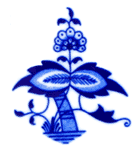 The central part of the basic motif
The central part of the basic motif
Which is dominated by a double sharply serrated leaf. This double leaf and the flower located above it are generally described as a peony bush, which symbolizes wealth, stateliness and growth.
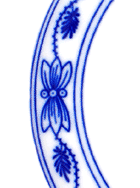 The edging between the central motif (SCHAKIAKO) and the fruits on the shoulder of the plate
The edging between the central motif (SCHAKIAKO) and the fruits on the shoulder of the plate
Is located in the flutes of the product, the third important part of the Onion ornamentation called the border or flower border, representing a twining climbing plant interrupted in 4 places by a lotus flower.
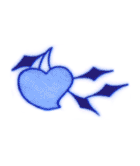 A BLESSED FRUIT IS LOCATED ON THE EDGE (OF THE SHOULDER)
A BLESSED FRUIT IS LOCATED ON THE EDGE (OF THE SHOULDER)
According to Chinese patterns, the shape of the fruit and the connection with the tree branch virtually without a stalk has the botanical marks and clear signs of a peach. This decorative element symbolizes and promises immortality or at least a long life .
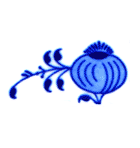 A second blessed fruit is also pictured on the edge (of the shoulder)
A second blessed fruit is also pictured on the edge (of the shoulder)
Fruit has been used for a long time as a ceramic decorative element and represents a very stylized pomegranate. This fruit is the symbol of fertility and abundant healthy children.
Contact information
Cesky porcelan, joint-stock company
Tovarni 605/17 | 417 01 Dubi I
phone: + 420 417 518 111
fax: + 420 417 571 968
e-mail: info@cesky.porcelan.cz

© Copyright 2009 Český porcelán a.s. | Seo optimization, Webdesign: PRO-IDEA
Up






